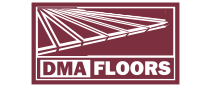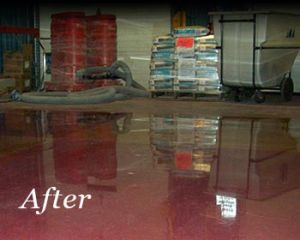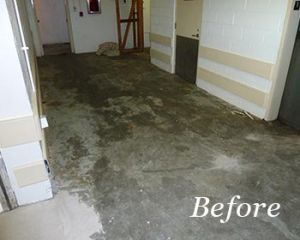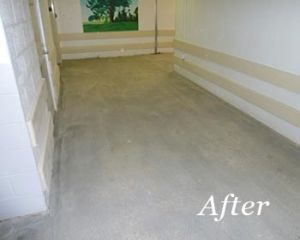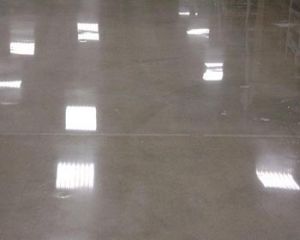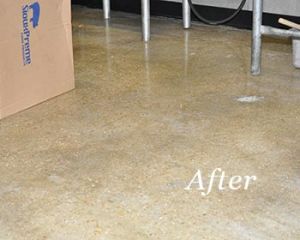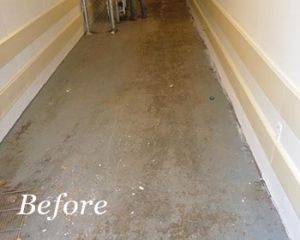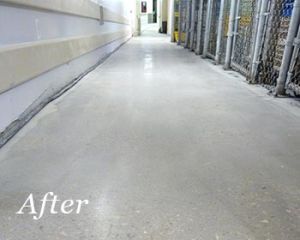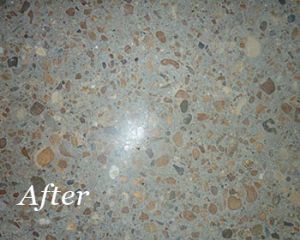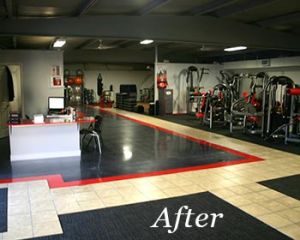Polished Overlays
 Polished overlays can be used to flatten a floor with a low floor flatness level, provide a consistent base for a polish over repaired floors, or as a decorative topping with or without decorative aggregate. Overlays are typically installed between 3/8" and 1" over a properly prepared slab (shot blasted and primed with manufacturer recommended primer system.) Once an overlay is installed and has cured, it can be polished using the same mechanical process as concrete. These overlays are typically Calcium Aluminate or Portland Cement based.
Polished overlays can be used to flatten a floor with a low floor flatness level, provide a consistent base for a polish over repaired floors, or as a decorative topping with or without decorative aggregate. Overlays are typically installed between 3/8" and 1" over a properly prepared slab (shot blasted and primed with manufacturer recommended primer system.) Once an overlay is installed and has cured, it can be polished using the same mechanical process as concrete. These overlays are typically Calcium Aluminate or Portland Cement based.
Joint Filling
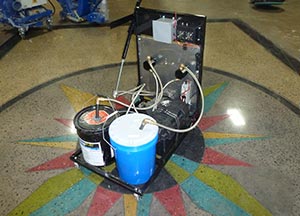 Construction joints and saw cuts (compression joints) should be filled in order to prevent debris from building up in them. This helps keep the floor cleaner, ease the cleaning of the floor, and extend the life of the floor by reducing places for damaging abrasives to build up. Joints should be filled with a semi-rigid polyurea joint filler. Most joint fillers are a medium gray, but there are colors available and some manufacturers offer custom matching of colors for certain quantities.
Construction joints and saw cuts (compression joints) should be filled in order to prevent debris from building up in them. This helps keep the floor cleaner, ease the cleaning of the floor, and extend the life of the floor by reducing places for damaging abrasives to build up. Joints should be filled with a semi-rigid polyurea joint filler. Most joint fillers are a medium gray, but there are colors available and some manufacturers offer custom matching of colors for certain quantities.
Decorative Staining
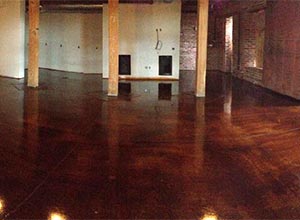
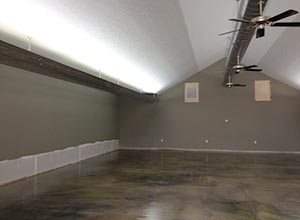
Semi-transparent stains are an inexpensive way to change the color to fit with a design or décor, delineate an area or pathway, reduce the impact of unwanted aggregate exposure, embed logos or pictures, or create dramatic design accents. Most stains that are compatible with polished concrete are not UV stable and can fade over time with high UV exposure. For high UV exposure areas, an integral color should be specified with the mix design.
Saw Cuts
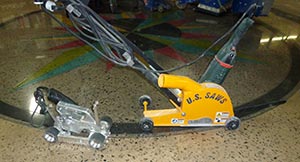 Decorative saw cuts can be used to create different effects (i.e. tile or brick pattern) in the floor, as a transition between colors, or to offer delineation between areas. Decorative saw cuts are typically filled with a semi-rigid polyurea joint filler.
Decorative saw cuts can be used to create different effects (i.e. tile or brick pattern) in the floor, as a transition between colors, or to offer delineation between areas. Decorative saw cuts are typically filled with a semi-rigid polyurea joint filler.
